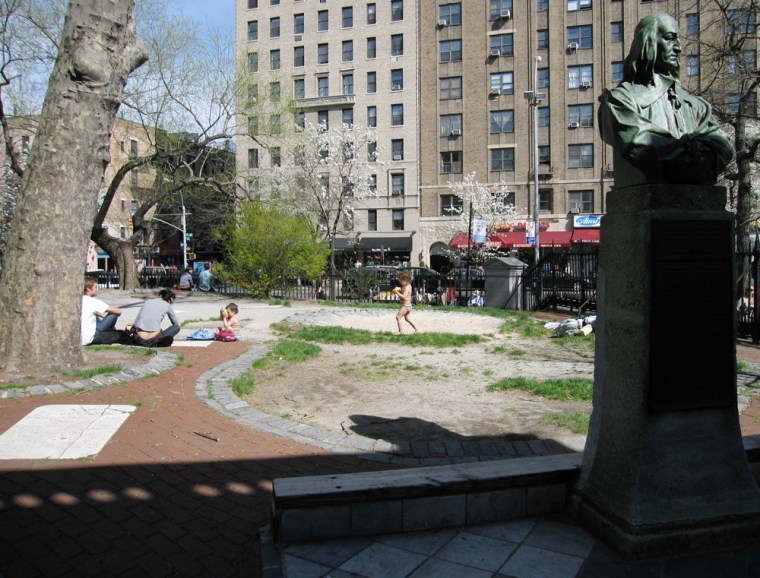Four hundred years after Henry Hudson sailed his ship Half Moon up a river that would one day bear his name, historians are marking his role in the evolution of a tiny Dutch trading post into a world capital called New York.
The activity includes exhibits by the Museum of the City of New York and the New York Historical Society, a recreation of the Half Moon's voyage of discovery up the Hudson, and scores of events here and in the Netherlands.
The Englishman's journey under the Dutch flag — Hudson's 58-foot (17.4-meter) ship left Amsterdam on the morning tide of April 4, 1609, and headed west — was yet another attempt by Europeans to find a "northwest passage" to Asia. Hudson and his 20 crewmen got only as far as modern-day Albany. But the impact of their voyage continues to this day.
Spurred by Hudson's report of an abundance of beavers, the Dutch sent fur traders to America and by 1621 the newly formed Dutch West India Co. had established a settlement called New Amsterdam where Hudson's river reached the sea.
That "toehold," as Museum of the City of New York chief curator Sarah Henry calls it, became the focal point of New Netherland, a colony reaching from present-day Connecticut to Delaware.
Rather than compete with Britain and France for territory, the Dutch concentrated on commerce — and were good at it.
"It's not well known that the concept of a permanent company owned by stockholders was an invention of the Dutch," Henry said. "This innovative approach to business helped set the stage for New York's emergence as a financial and business center."
That is among several themes in three planned exhibits at the museum and one in Holland titled "Amsterdam/New Amsterdam: The Worlds of Henry Hudson."
In addition, the New-York Historical Society plans two exhibits, and the Dutch consulate in New York lists more than 50 events in both cities, ranging from "New York Nights" in Amsterdam to concerts, walking tours, and art and flower shows.
In September, a replica of the Half Moon will recreate its voyage up the Hudson.
Arriving Sept. 3, 1609, Hudson sailed up the river discovered by the Italian Giovanni de Verrazano in 1524 and familiar as well to French, Portuguese and English explorers.
Along the 150-mile (240-kilometer) journey, Hudson traded with the natives — trinkets and knives for tobacco — repeatedly ran aground, and gave up when the river became unnavigable.
While the Dutch "bought" territory from the natives, it was more like paying rent and giving it back on departure, curator Henry said. "The Indians did not think you could own land, water or air. It wasn't part of their world view.."
The Dutch brought not only trading skills but "freedom of conscience" that protected people from religious persecution, a principle later enshrined in the U.S. Bill of Rights. Although slavery existed, New Amsterdam, like modern New York, was ethnically diverse, with 18 languages spoken in 1660.
New York's half-century of Dutch history survives mainly in street names, as fires wiped out most early Dutch-style architecture. Henry Hudson has a river, a highway and a bridge bearing his name, along with a statue in Henry Hudson Park in the Bronx.
Myths also survive, a favorite being that the Dutch bought Manhattan from Indians for $24. That figure, based on an 1840 exchange rate, would be "peanuts," says Dutch historian Jaap A. Jacobs.
A letter written by a Dutch official in 1626 says the price was "60 guilders" — probably in trade goods, Jacobs says. "It's difficult to convert any 17th century sum into modern currency, but for comparison, a soldier earned eight to 12 guilders a month, and a skilled artisan 300 a year."
